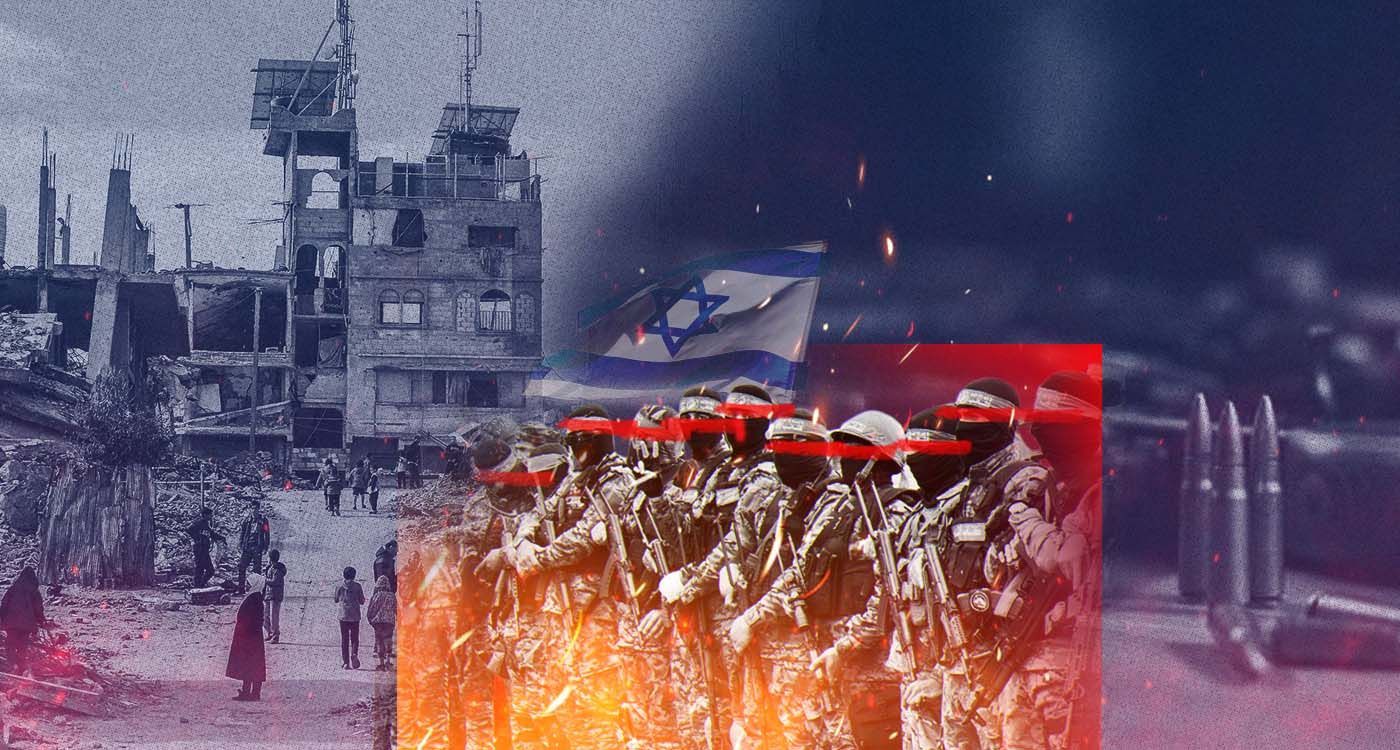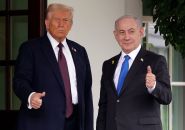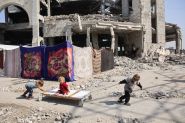- Home
- Middle East
- Disarming Hamas: How Could Gaza Be Demilitarized?

©This Is Beirut
The peace plan co-signed on Monday in Sharm el-Sheikh by US President Donald Trump and the leaders of Egypt, Qatar and Turkey raises a crucial question: How would Hamas be disarmed?
The Trump plan lays out a stark reality: Gaza must be demilitarized. To achieve this, a stabilization force will need to be created. On paper, the plan seems straightforward: surrender weapons, dismantle underground networks and replace Hamas’ military apparatus with police forces trained and overseen abroad.
In practice, the picture is far more complicated. Once the mechanisms, power dynamics and key players are examined, the apparent simplicity disappears. Hamas continues to resist full demilitarization and has actively worked to maintain and expand its capabilities through mass recruitment and the reorganization of its cells.
In an effort to unpack the declaration, for which Egypt, Turkey and Qatar serve as guarantors, This is Beirut examines the components of the mission facing the future international stabilization force. What room for maneuver does it have, what are its limits, and what are the possible disarmament scenarios?
The plan is built on three main pillars: a gradual Israeli military withdrawal from Gaza, the establishment of a neutral transitional authority to oversee reconstruction, and the creation of an international force tasked with disarmament and monitoring compliance with non-rearmament.
The framework relies on regional partners, particularly Egypt and Jordan, to train and supervise units responsible for maintaining order once the transition is underway. A military expert, speaking to This is Beirut on condition of anonymity, says, “The idea of a multinational force, with a training component for the 'Palestinian police' and a monitoring component for remote oversight, using drones for example, is not just diplomatic. It is the very essence of the plan.”
Disarmament: Between Political Agreement and Military Pressure
General Dominique Trinquand, former head of the French military mission to the UN, says the question of disarmament rests on both political and operational grounds, but it comes with clear limits. “Disarmament can only take place within the framework of an agreement,” he notes. Without one, he warns, there is only one alternative: armed confrontation. “In the absence of an accord, demilitarization can only be imposed by force.”
Disarming Hamas is far from a purely technical task. It is a deeply political move, with intense symbolic weight. Since 2007, the movement has built a presence in Gaza that extends beyond the military. It is also social, administrative and ideological. “Weapons are a source of power, honor and security in a territory where the state is absent. Asking commanders to lay down their arms is asking them to give up their very reason for being,” a military source cited earlier explains.
Recent developments illustrate this challenge. Despite losses, Hamas has continued massive recruitment, bolstering its ranks even amid hostilities. According to US intelligence reports from January 2025, between 10,000 and 15,000 new members joined since the start of the war. Today, following Israel’s partial withdrawal from the enclave and the implementation of the Trump plan, Hamas has launched another wave of remobilization, reportedly recruiting 5,000 to 7,000 additional members.
Critical Steps in Disarmament
“Operationally, several tasks must happen at once for disarmament to succeed,” says the military expert. The plan involves identifying and consolidating weapons caches and workshops, neutralizing launch capabilities such as rockets and drones, preventing the reconstruction of tunnels, and setting up a chain of custody for all collected arms, whether in secure depots or through supervised destruction. “Each step is technically demanding and dangerous, but the real challenge is political. Who can enter homes, open caches, prosecute and imprison? What mandate does the international force have? Who has the legal authority to order these operations?” he asks.
France is pushing for a resolution to define the mission and authority of the international stabilization force, but General Trinquand stresses that no resolution will be effective until Hamas accepts disarmament. “A stabilization force can only exist once there is an agreement on this question,” he says. He outlines the force’s strictly operational role, “Once the disarmament agreement is formalized, the force can be created to receive, inventory, store, and if necessary, destroy weapons.”
Under the plan, the international stabilization force would be composed mainly of around 5,000 police, according to General Trinquand. They would be trained in Jordan or Egypt and supported by intelligence and surveillance from other states. The aim is to give the operation a policing appearance, even though in reality it would resemble a paramilitary deployment.
Regional Leeway and Plausible Scenarios
Jordan and Egypt bring regional experience, cultural ties and some legitimacy to oversee Palestinian forces, says the military expert speaking on condition of anonymity. Both countries also face limits, constrained by internal politics and reluctance to commit long-term on Palestinian soil.
“Deploying police is a start, but they cannot replace an army when it comes to neutralizing underground networks and deeply buried weapons caches,” the expert adds. The challenge lies in combining resources: trained local police, logistical support, international intelligence and, if needed, temporary forces with the capacity to counter active resistance.
Observers see three main scenarios. The first envisions an orderly rollout: a controlled Israeli withdrawal, the arrival of an international contingent with a clear mandate, rapid formation of a Palestinian police force under the supervision of Jordan, Egypt, Indonesia and others, and the collection and verified destruction of weapons. Oversight would gradually shift to a technocratic committee. “This scenario is appealing, but it requires near-perfect coordination between diplomatic pressure, Hamas’ willingness to avoid sabotage and guarantees for Israel,” notes General Trinquand.
The second scenario is more pessimistic. Hamas refuses full demilitarization, maintains its clandestine presence and provokes clashes with international forces or local militias, potentially triggering a partial or large-scale return of the Israeli army to clear pockets of resistance.
A third scenario combines elements of the first two: an unstable coexistence where Hamas temporarily tolerates the technocratic authority while retaining clandestine capabilities and exerting influence through informal networks. This would pose a high risk of recurring violence and gradual erosion of peace. Internal dynamics, including influential families, criminal groups and other Palestinian factions, could render any formal plan ineffective if they are not taken into account, the military expert warns.
Boosting the Odds for Success
According to the same source, several measures could improve the chances of success. First, a clear stabilization mandate with a fixed timeline, renewable under strict conditions and backed by an independent accountability mechanism with judicial authority to address abuses. Second, reintegrating former fighters into credible local forces with economic incentives and security guarantees, instead of simply imprisoning or sidelining them. Third, a strong regional commitment to cut off funding and trafficking networks. Fourth, concrete assurances for Israel, including shared intelligence oversight and inspections, alongside tangible guarantees for the Palestinian population, who currently has no real alternatives. Even small failures could jeopardize the entire effort.
Disarming Hamas is less a military operation than a test of diplomacy and governance. The international stabilization force, along with the wider global community, carries a historic responsibility: turning a cycle of war into a process of reconstruction.
Failure will not come from a lack of resources but from underestimating the deep social and political fractures in a territory under constant tension, and the absence of alternatives for a population still subject to Hamas’ entrenched ideological influence. The coming months will reveal whether Gaza can finally move toward control and reconstruction, or whether the rule of arms will continue to dictate the reality on the ground.
Read more





Comments